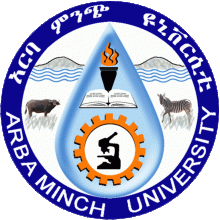Resource information
Irrigation scheme performance assessment is vital to evaluate the impacts of irrigation practices, to identify performance gaps and to improve system performances. However, the performance of Jari and Aloma Small Scale Irrigation (SSI) schemes was not assessed since its operation. Therefore, this study was carried out to evaluate the water delivery, on-farm water management and organizational performances of the two SSI schemes. Secondary data from different reports and primary data through field measurements, household surveys, key informant interviews and group discussions were collected. CROPWAT 8.0 model, SPSS and GIS software were used to analyze the data. The result of this study revealed that, the overall canal water delivery efficiencies of Jari and Aloma SSI schemes were 66% and 59%, respectively. Majority of the respondents, 37% in Jari and 61.9% in Alom, reflected that the maintenance condition of irrigation infrastructures was bad. From the respondents 45.5% in Jari and 50% in Aloma described that illegal water abstraction accounts the primary cause for unfair water distributions. The ratios of relative water supply and the relative irrigation water supply were almost equal to 1 at both SSI schemes. This implied that the amount of water supplied was sufficient for the water demand of the schemes. Output per unit irrigated area values of 2198$/ha and 1356$/ha were calculated at Jari and Aloma SSI schemes, respectively. Furthermore, the output per unit command area of Jari (3464$/ha) was three fold higher than the value of Aloma (1061$/ha). Water productivity indicators such as, Output per unit irrigation water supplied (OPUIS), Output per unit irrigation water delivered (OPUID) and Output per unit water consumed (OPUWC) values of 0.47$/m3, 0.89$/m3 and 0.49$/m3in Jari, and 0.2$/m3,0.55$/m3 and 0.3$/m3 in Aloma schemes were calculated, respectively. Irrigation intensity ratio in Jari (174%) was much higher than Aloma (78%). The original irrigable areas were declined by 14% in 3 years and 39% in 10 years operation periods in Jari and Aloma schemes, respectively. The main reasons for low output production in Aloma scheme were low irrigation intensity, grown low value crops. Generally the performance of Jari is better than Aloma SSI schemes.



